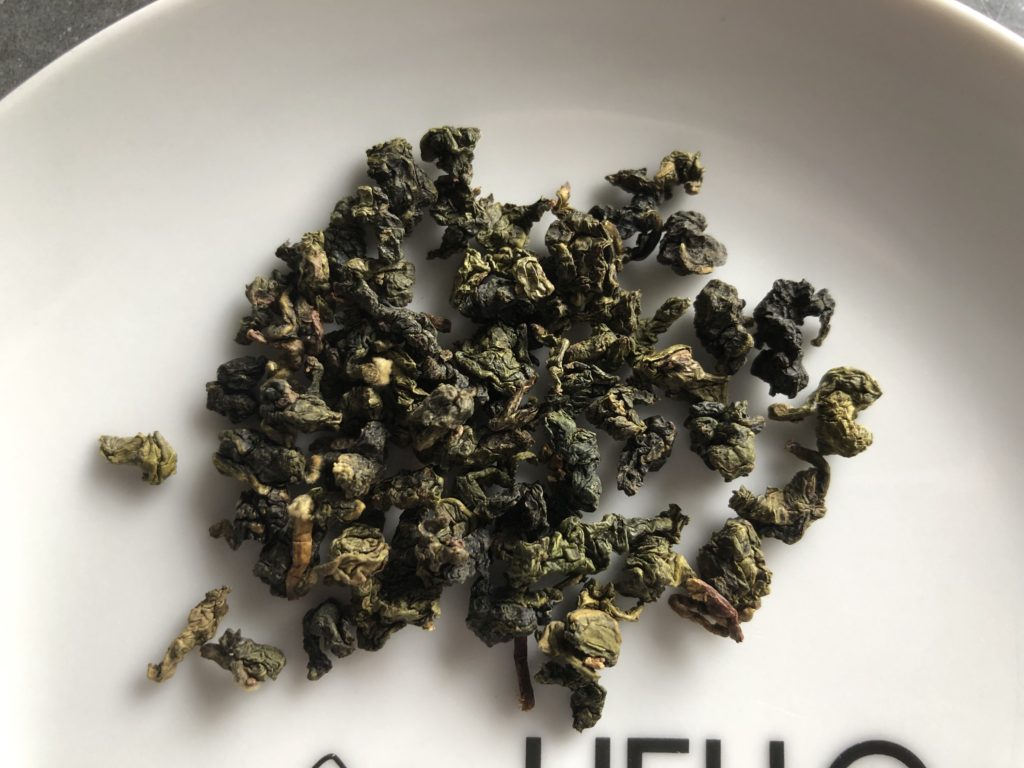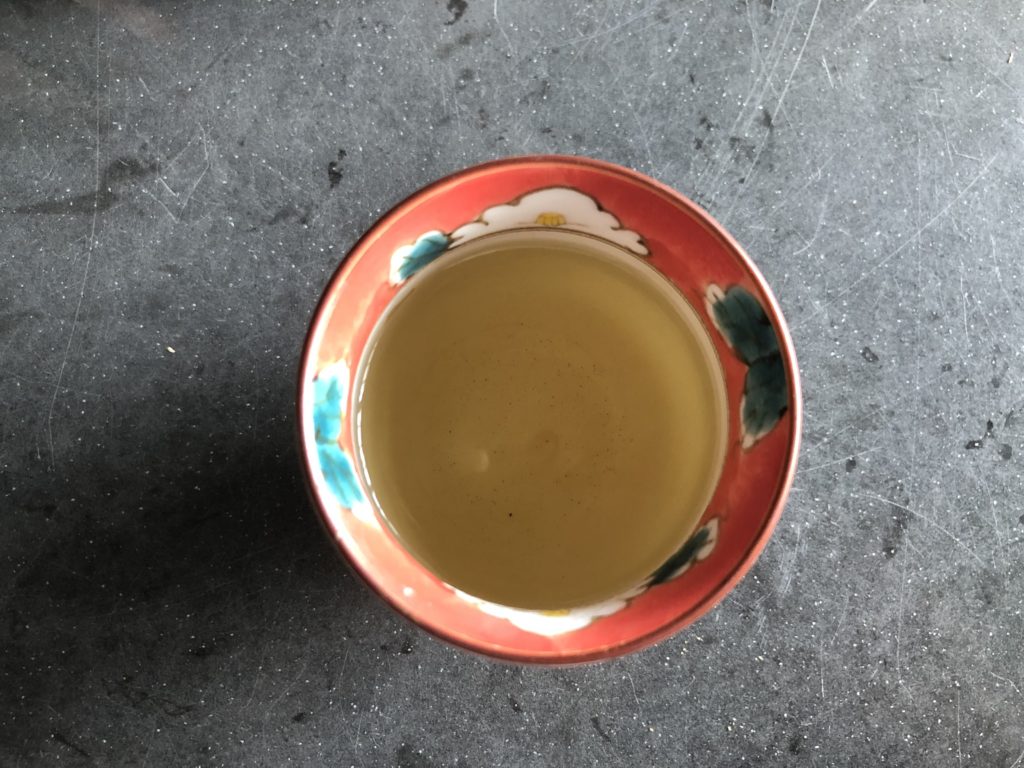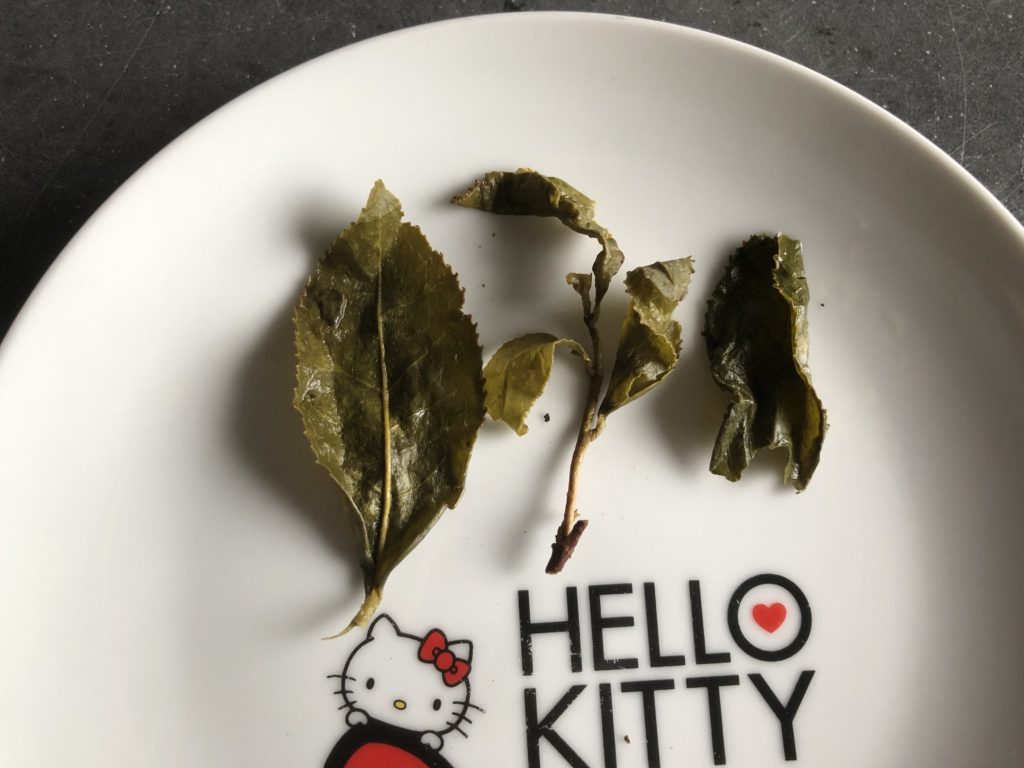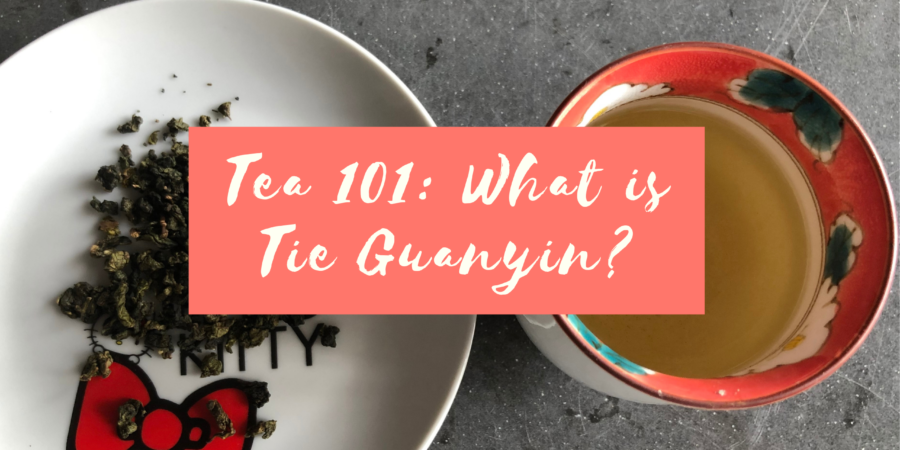During work this week, someone casually mentioned that there were a lot more varieties of Tie Guanyin than he imagined. Since I’ve only heard of Tie Guanyin as the tea that comes from the Tie Guanyin cultivar, I was surprised and we ended up looking into what a Tie Guanyin is (perks of working with tea – this is part of work). It’s pretty interesting so I thought I’d share what I found.
What is Tie Guanyin
Our source of confusion started from the fact that there was an article listing the different varieties of tea that could be made from Tie Guanyin. But we soon found the source of confusion:
- Tie Guanyin is a tea cultivar
- But in Taiwan, oolongs made with the Tie Guanyin method [1] can also be called Tie Guanyin.
Apart from that, the high value of Tie Guanyin and its slow rate of growth means that other cultivars with similar teas may be packaged and marketed as Tie Guanyin [2]. The other cultivars would be ones like Benshan and Maoxie [3], both of which are easier to grow and can be harvested at a higher frequency.
This would explain passages like this:
“Tea varieties can be divided into so-called pure Tieguanyin and non-pure Tieguanyin in the market. Pure Tieguanyin is also known as Hongxin Guanyin or Hongxiang Guanyin. Others, such as Hongying Guanyin, Baixinwei Guanyin, Baixiang Guanyin and thin-leaf Guanyin, are not pure Tieguanyin.” [4]
This was part of an article differentiating between Tie Guanyin and Huangjingui, Benshan, and Maoxie. So even within the genre of Tie Guanyin, people will use gradients but to me, when they say “pure”, I hear “genuine”.
How to Identify Genuine Tie Guanyin
I found this article from Sohu [5] that talks about how to identify genuine Tie Guanyin, made from the Tie Guanyin cultivar. It looks very useful but it’s also in Chinese, so I decided to translate a few of the main points – but if you know the language, I’d encourage you to read the entire article, especially since they have pictures!
Step 1: Where was the tea from?
According to the article, Tie Guanyin should come from the Gande Village, Xiping Town (home to the original Tie Guanyin tea bush), and Xianghua Township in Anxi, China. The article doesn’t mention Muzha (Taiwan), but a Tie Guan Yin cultivar was brought over about two hundred years ago [6]. Of course, even if a tea is said to be from Muzha, Gande, Xiping, or any region in Anxi doesn’t mean that it’s 100% a Tie Guanyin (provenance is quite commonly fudged in the tea world) so do check other markers to see if it’s genuine.
Step 2: Look at the dry leaves
The leaves of the genuine Tie Guanyin are curled to the back, the head is round, and it’s heavy. The dry leaves should also be a dark green colours.
Maoxie cultivar ‘Tie Guanyin’ has a slightly more yellow-green colour to it and the stem is knotted and curved.
Benshan cultivar ‘Tie Guanyin’ has a ripe banana yellow colour (direct translation), the leaves are thinner, and the end is bigger.
If you’re looking at the Chinese page, the first picture is of original Tie Guanyin, the second picture is Maoxie, and the third is Benshan.
Step 3: Listen
Apparently, genuine Tie Guanyin is rolled tighter, which means each ball of oolong is heavier. If you drop them into a pot, there should be a clear “dang dang” sound.
Step 4: Smell
Genuine Tie Guanyin is said to have a unique and lasting fragrance that fills the room the minute you open the lid of the cup.
Step 5: Observe the Tea Liquor
The tea liquor should be a golden yellow and the brewed leaves should be lustrous. If the tea liquor is dark, it’s not a good sign.
Step 6: Taste
I will be honest and say that the descriptions here are pretty fluffy. It’s about how the tea is mellow and the huigan is sweet, along with a saying on how it should taste. I think it’s better to find a tea merchant you trust and buy their Tie Guanyin and use your own experience to evaluate future teas from shops you may not be as familiar with (this really should be the entire advice in a nutshell but I still think there’s value in knowing what to look out for).
Step 7: Observe the brewed leaves
The stems of the brewed leaves are round and the leaves should be thick, soft, and lustrous. There’s another useful picture in the original article and from the pictures, it seems like the brewed Tie Guanyin leaves are the greenest. The pictures are in the order of genuine Tie Guanyin, Maoxie, and Benshan.
Step 8: Price
The article doesn’t list a price range and just says not to trust tea if it’s too cheap or even if it’s expensive. And to be honest, if you’re buying tea from the farmer or the tea roaster (not all farmers process their own tea), then it’s going to be a lot cheaper than buying it from a tea shop or a middleman. As always, start by buying from trusted sources and using that as a gauge (if you buy mainly from farms, you’ll have an idea of the prices for each season, if you buy from a tea merchant, you’ll have a gauge of the teas plus their markup, and so on).
Personal Taste Test
So we happened to have some Tie Guanyin in the office as we were testing tea roasting methods. Since we had some extra, I brought it home to see if I could practice the points mentioned in the article. This tea was a lightly roasted spring Tie Guanyin, but it has been lightly roasted by us.

The colour of the dry leaves were mostly dark green [7] and they had a pleasant fragrance with vegetal and roasted notes.

The tea was extremely fragrant when brewed – my dad was in the same kitchen, not next to me, and he remarked on the smell of the tea the minute I opened the lid. The fragrance had lovely toasting notes, probably from the roasting we did; we brewed a cup that wasn’t roasted and it was not as strong as this. The tea liquor was a nice golden yellow and it tasted sweet, mellow, and lingered in the mouth. As with the fragrance, there were roasted/toasty notes when I drank the tea. So far, it follows what the article said.

Lastly, I decided to look at the brewed tea leaves. The good thing is that this tea is made of whole leaves. But even when feeling the leaves, I can’t tell if the leaves are thick and lustrous – I really need to start looking at the brewed leaves more.
Overall, this was a pretty interesting exercise! I really enjoyed this tea and I think it’s a pretty easy oolong to get into; it’s really fragrant and sweet with the right amount of roast.
References
[1] I have searched but I can’t find anything about the characteristics of the Tie Guanyin method of roasting/processing. If you have any information, please let me know!
[2] This article from Seven Cups has a bit more information about the Tie Guanyin cultivar!
[3] This article isn’t about Maoxie, but if you’re interested in reading more, this article goes into much more detail. Caveat: It’s in Chinese. But I also tried Google translate and apart from translating Maoxie as “hairy crab”, it’s good enough to get the gist of the article.
[4] The quote is from an article on China Tea 101.
[6] According to this article I found, it’s even debatable if the Tie Guanyin cultivar brought over to Taiwan can be called Tie Guanyin. A certain strain of purists might disagree, but to me, as long as it’s made using the Tie Guanyin cultivar in the Tie Guanyin method, then it’s a Tie Guanyin even if it wasn’t from Anxi.
[7] I was thinking of the oolong workshop that mentioned about 70% of the colour should be the same and the rest shouldn’t differ too much from the main colour. This seems to fit.

Dear Taco,
I found some information about the on the german wikipedia. Please find here https://de.wikipedia.org/wiki/Tieguanyin in the section “Herstellung und Handelssorten”.
Thanks for your “Tea 101” on this tea. It is very interesting an well written.
I got a box of Tieguanyin in a very high qualtiy as a gift from a chinese business meeting last year. I love the taste and fragrance of this tea. If this tea matches my flavour, do you have a recommendation for other teas I could like a lot? I am not so into the materia so far.
Best wishes from Germany,
Alexander
Hi Alexander, thanks for the information – I’ll take a look at it ASAP
Was your Tieguanyin very highly roasted? If it isn’t, you may like Taiwanese high mountain oolongs, they have similar notes to light roast tieguanyin. I’m not too sure about similar teas for the higher roasted types of tieguanyin but I’ll let you know if I find out!